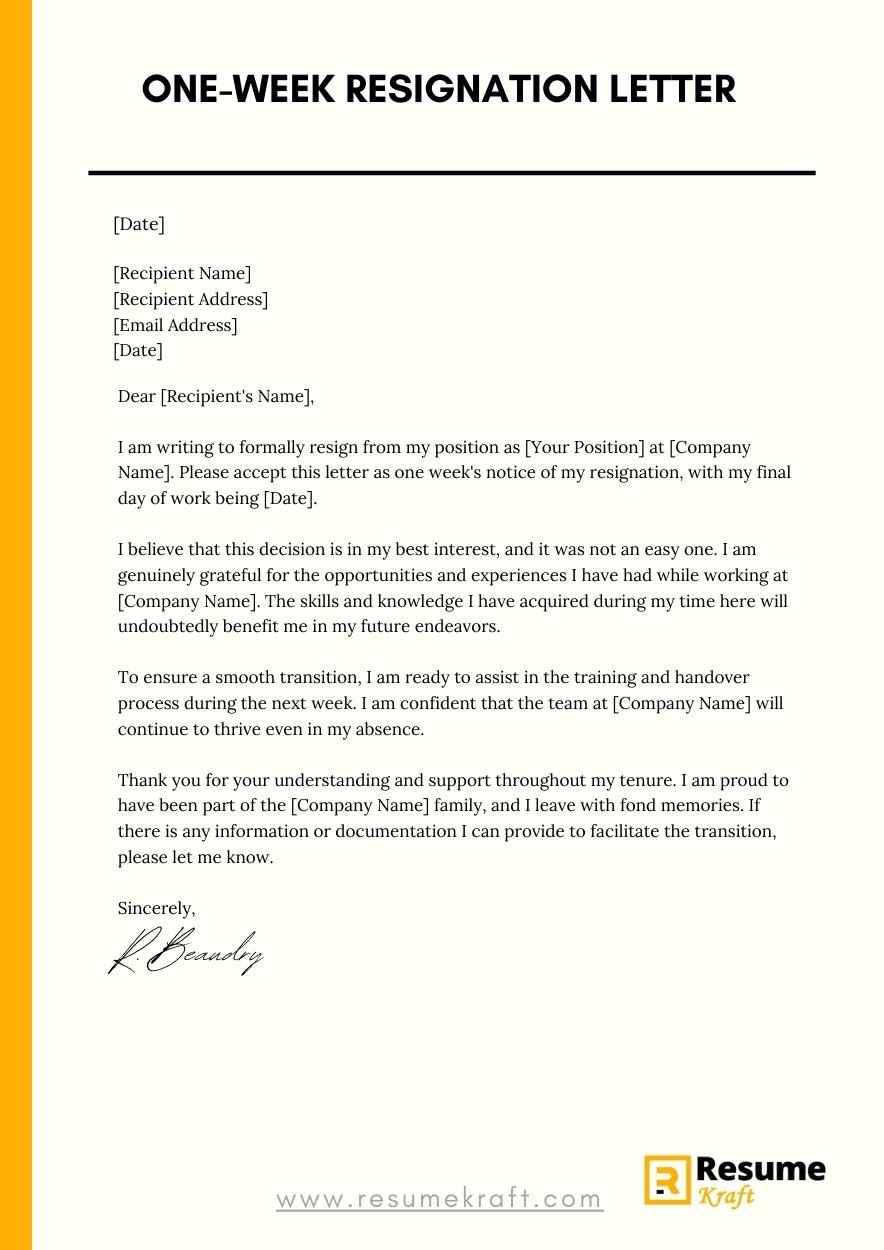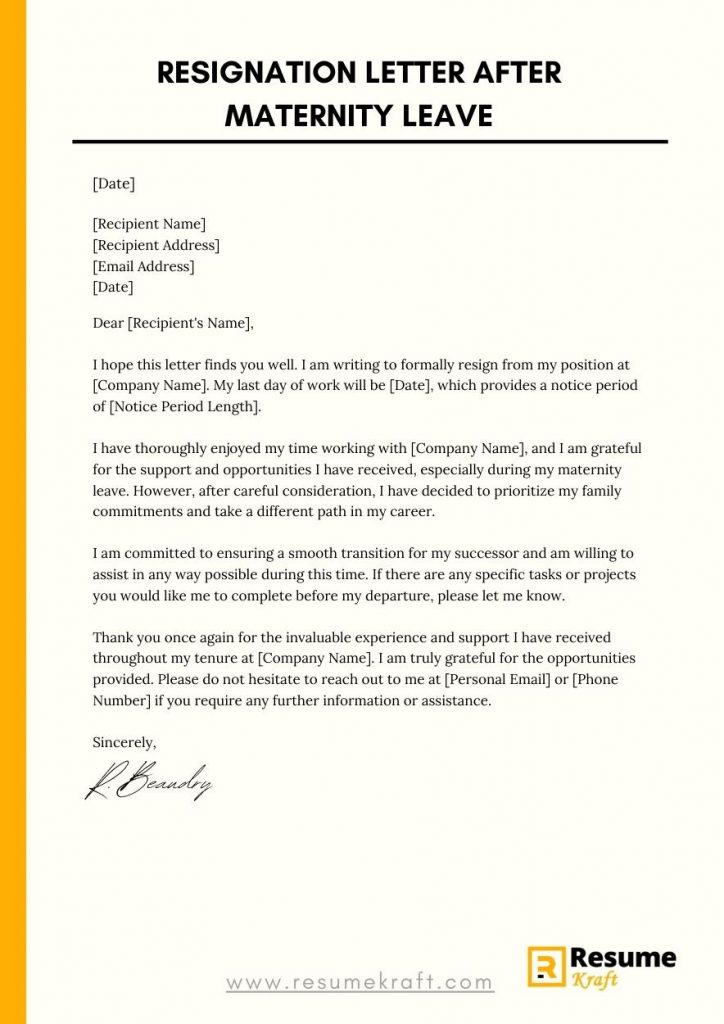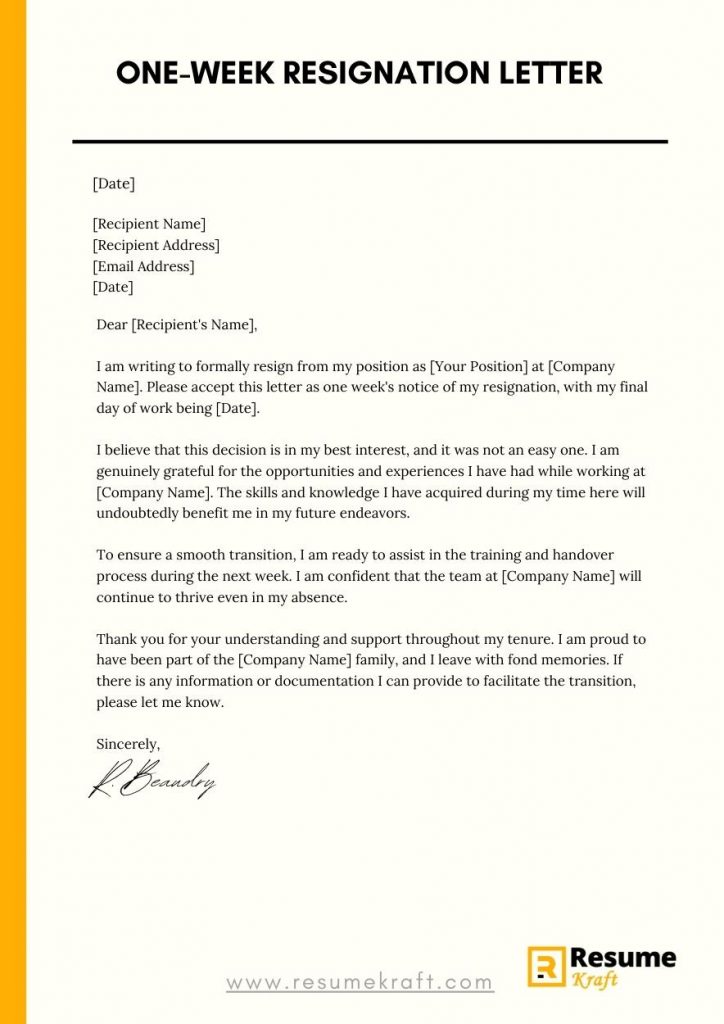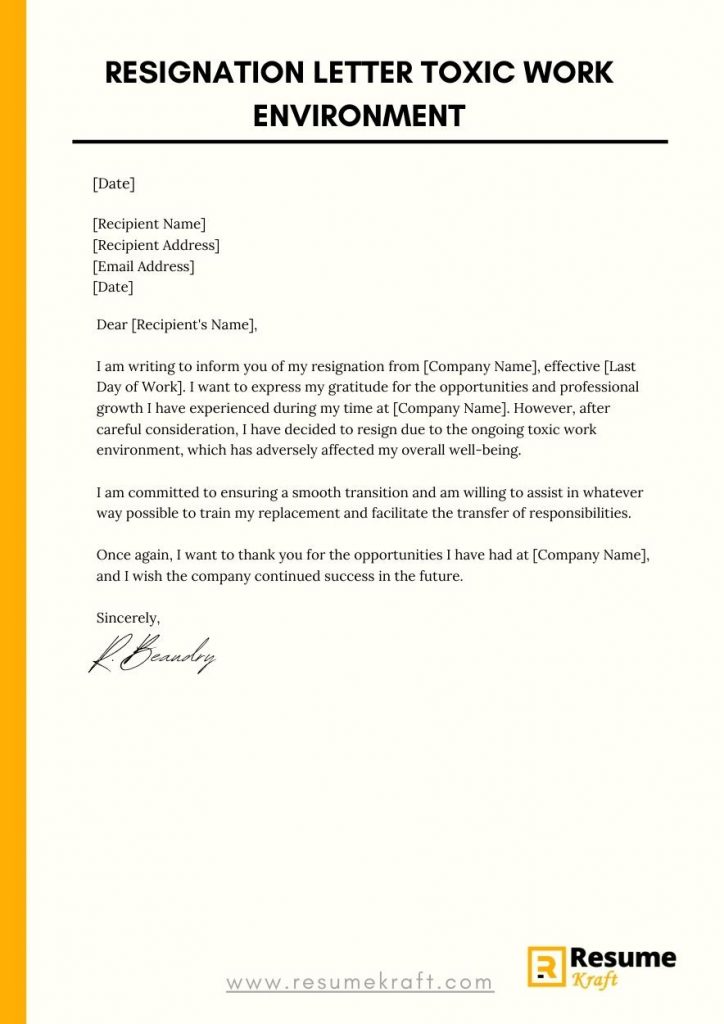
Leaving a job, even if it’s for exciting new opportunities, can be a delicate process. The way you resign speaks volumes about your professionalism and can significantly impact your future career prospects, references, and industry reputation. In 2025, while communication methods evolve, the core principles of a well-crafted resignation letter remain timeless: clarity, respect, and professionalism.
This comprehensive guide will walk you through everything you need to know about writing a resignation letter in today’s professional landscape. We’ll cover the essential components, provide practical tips, and offer various examples to ensure your departure is as smooth and positive as your arrival was. Whether you’re moving to a new role, taking a break, or facing challenging circumstances, learning how to write a resignation letter is a critical career skill.
Why a Formal Resignation Letter Still Matters in 2025
In an era of instant messaging and digital communication, some might wonder if a formal resignation letter is still necessary. The answer is a resounding yes. Here’s why:
- Professionalism: It demonstrates respect for your employer and the role you’re leaving.2
- Legal Documentation: It serves as a formal record of your notice period and your departure date, protecting both you and the company.
- Clarity and Avoidance of Misunderstandings: A written letter leaves no room for ambiguity regarding your intentions or last day of employment.
- Maintaining Positive Relationships: A professional exit can preserve valuable networking connections and ensure good references for the future.
- Company Records: It’s essential for HR, payroll, and benefits administration.
- Setting the Tone: It helps manage the transition gracefully, for both you and your team.



Essential Components of a Resignation Letter
While conciseness is key, a standard resignation letter in 2025 should always include these core elements:
1. Your Contact Information
- Your Full Name
- Your Address
- Your Phone Number
- Your Email Address
- Date of Writing
2. Employer’s Contact Information
- Hiring Manager/Supervisor’s Name (or HR Department Head)
- Hiring Manager/Supervisor’s Title
- Company Name
- Company Address
3. Formal Salutation
- Use a professional salutation, e.g., “Dear Mr./Ms./Mx. [Last Name],” or “Dear [Hiring Manager’s Name],”
4. Statement of Resignation and Effective Date
- Clearly state your intention to resign.
- Specify your last day of employment, adhering to your contract’s notice period.5
5. Expression of Gratitude (Optional, but Recommended)
- Briefly thank them for the opportunity and any positive experiences.
6. Offer of Assistance During Transition (Optional, but Recommended)
- Show willingness to help with a smooth handover of responsibilities.
7. Professional Closing
- Sincerely, Respectfully, Best regards,
8. Your Signature
- Typed Name (and physical signature if submitting a hard copy)
Step-by-Step Guide to Writing Your Resignation Letter in 2025
Let’s break down the process into actionable steps to ensure your resignation letter is perfect.
Step 1: Confirm Your Notice Period
Before writing anything, review your employment contract or company handbook to determine the required notice period. This is typically two weeks, one month, or longer, depending on your role and industry. Adhering to this is crucial for a smooth and professional departure.
Step 2: Choose the Right Time and Method for Delivery
- In-Person First: Ideally, inform your direct manager of your decision to resign in person (or via video call if remote) before submitting your letter. This shows respect.
- Follow Up with the Letter: The formal letter should be submitted shortly after your conversation.
- Delivery Method: Email is common, but a hard copy may also be appreciated for formal records. Send it to your direct manager and HR.
Step 3: Draft Your Letter (Keep it Concise and Positive)
Focus on brevity and positivity. Avoid airing grievances or getting emotional.6 The letter is a formal record, not a forum for complaints.
Step 4: Double-Check for Accuracy
Ensure all dates, names, and titles are correct. Typos or factual errors can undermine your professionalism.
Step 5: Proofread Meticulously
Grammar and spelling errors reflect poorly on you. Use spell-checkers, but also proofread manually. Better yet, ask a trusted friend or colleague to review it.
Step 6: Save and Send
Save a copy for your records. If sending via email, use a professional subject line like “Resignation – [Your Name]”.
When to Deviate from the Standard: Specific Scenarios and Considerations
While the basic format is universal, certain situations call for specific nuances.
1. Resigning with Standard Notice (The Most Common Scenario)
This is the ideal scenario where you provide ample notice and maintain positive relations. Your letter will be straightforward, focusing on clarity and gratitude. For a standard example, you can refer to ResumeKraft’s primary resignation letter resources.
2. Resigning Due to a Hostile Work Environment
This is a delicate situation. While your letter should still be professional and avoid direct accusations, you can subtly indicate the reason if you deem it necessary for your well-being or legal protection, without getting emotional. It’s often best to consult with legal counsel if you believe there are severe issues. However, the letter itself should remain factual. Learn more about navigating this difficult exit with ResumeKraft’s guide on resignation due to hostile work environment.
3. Resigning for Personal Reasons with One Month’s Notice
Life happens, and sometimes personal circumstances necessitate a job change. Your letter can briefly mention “personal reasons” without going into detail. The key here is acknowledging the one-month notice period and offering a smooth transition. Find examples and tips tailored for this scenario on ResumeKraft’s page for resignation letter for personal reasons with one month notice.
4. Resigning from a Pastoral Role
Pastoral or religious roles often carry unique considerations, including ethical obligations and community impact. A pastoral resignation letter requires particular care, often emphasizing spiritual guidance, community well-being, and a graceful handover of duties. Explore specific advice for this niche on ResumeKraft’s dedicated resource for a pastoral resignation letter.
5. Resigning with Less Than Standard Notice
This is generally not recommended unless absolutely unavoidable (e.g., immediate health crisis, family emergency, or a highly unusual clause in your new employment contract). If you must, explain briefly and apologetically why you cannot provide full notice, and reiterate your commitment to assisting with the transition. Be prepared for potential pushback or a less favorable reference.
6. Resigning After a Very Short Tenure
If you’re leaving a job after only a few weeks or months, a resignation letter is still required. Keep it brief, professional, and focus on the future. You don’t need to over-explain your reasons unless directly asked in an exit interview.
What NOT to Include in Your Resignation Letter
Avoiding these common pitfalls is as important as including the right elements:
- Complaints or Grievances: This is not the place to vent about your manager, colleagues, company culture, or workload.7 Save any feedback for an exit interview if you choose to participate, and even then, frame it constructively.
- Excessive Detail About Your New Job: There’s no need to elaborate on where you’re going or what your new role entails.
- Demands or Ultimata: You’re resigning, not negotiating.
- Emotional Language: Keep the tone professional, calm, and objective.
- Negative Feedback About Colleagues: Never throw anyone under the bus.
- Threats or Legal Barrages (unless advised by legal counsel): If you have serious concerns, address them separately through appropriate channels.
The Resignation Process: Beyond the Letter
Your resignation letter is a key component, but it’s part of a larger process.
1. Inform Your Manager First
As mentioned, a verbal or video conversation should precede the formal letter. This personal touch is critical for maintaining good relationships.
2. Discuss Your Transition Plan
Be proactive in discussing how you can best transition your responsibilities. Offer to train your replacement or document your processes.
3. Manage Your Exit Interview
If offered an exit interview, decide if you want to participate. This can be an opportunity to provide constructive feedback, but think carefully about what you say. Keep it professional and focus on systemic issues rather than personal attacks.
4. Maintain Professionalism Until Your Last Day
Your commitment should remain high until your final hour of employment. Finish outstanding tasks, tie up loose ends, and avoid gossiping. Your last impression is as important as your first.
5. Stay Connected (Selectively)
Consider connecting with valued colleagues on LinkedIn. A professional network is a valuable asset throughout your career.
Looking Ahead: Preparing for Your Next Opportunity
As you prepare to leave your current role, it’s also time to focus on your next professional step.
- Update Your Resume: Ensure your resume reflects your most recent experience and accomplishments. If you need help, explore ResumeKraft’s collection of resume examples for inspiration, or simplify the process with our AI Resume Builder.
- Craft Compelling Cover Letters: Each new application deserves a tailored cover letter that highlights your unique value proposition. Get started with ResumeKraft’s cover letters guidance.
- Leverage Resume Templates: To save time and ensure a professional layout, consider using resume templates from ResumeKraft that are designed to impress recruiters.
- Network: Inform your professional network that you’re seeking new opportunities (without badmouthing your current employer).
Resignation Letter Examples for 2025
Here are a few templates you can adapt, covering common scenarios. Remember to replace bracketed information [ ] with your specific details.
Example 1: Standard Two Weeks’ Notice Resignation Letter
[Your Name]
[Your Address]
[Your Phone Number]
[Your Email Address]
[Date]
[Hiring Manager’s Name]
[Hiring Manager’s Title]
[Company Name]
[Company Address]
Dear [Mr./Ms./Mx. Last Name or Hiring Manager's Name],
Please accept this letter as formal notification that I am resigning from my position as [Your Position] at [Company Name]. My last day of employment will be [Your Last Day – typically two weeks from the date of the letter], in accordance with my notice period.
I am grateful for the opportunity to have worked at [Company Name] for the past [Number] years/months. I have particularly valued [mention one or two positive experiences or skills gained, e.g., the professional development opportunities, the collaborative team environment, or specific projects you enjoyed working on].
During my remaining time, I am committed to ensuring a smooth transition of my responsibilities. I am happy to assist in training my replacement and completing any outstanding tasks to the best of my ability.
I wish [Company Name] continued success in the future.
Sincerely,
[Your Typed Name]
[Your Signature (if submitting hard copy)]
Example 2: Resignation Letter for Personal Reasons (One Month Notice)
[Your Name]
[Your Address]
[Your Phone Number]
[Your Email Address]
[Date]
[Hiring Manager’s Name]
[Hiring Manager’s Title]
[Company Name]
[Company Address]
Dear [Mr./Ms./Mx. Last Name or Hiring Manager's Name],
Please accept this letter as formal notification that I am resigning from my position as [Your Position] at [Company Name] due to personal reasons. My final day of employment will be [Your Last Day – typically one month from the date of the letter].
I appreciate the opportunities I have been given during my time at [Company Name], particularly [mention a positive aspect or specific learning experience]. I have valued my time here and am thankful for the support I have received.
I am committed to ensuring a seamless handover of my duties before my departure. Please let me know how I can best support the team during this transition period.
I wish you and [Company Name] all the best for the future.
Sincerely,
[Your Typed Name]
Example 3: Resignation Letter (Brief, No Specific Reason)
[Your Name]
[Your Address]
[Your Phone Number]
[Your Email Address]
[Date]
[Hiring Manager’s Name]
[Hiring Manager’s Title]
[Company Name]
[Company Address]
Dear [Mr./Ms./Mx. Last Name or Hiring Manager's Name],
This letter is to formally notify you of my resignation from my role as [Your Position] at [Company Name]. My last day of employment will be [Your Last Day].
Thank you for the opportunity to have worked here. I wish the company and my colleagues all the best.
I am committed to facilitating a smooth transition of my responsibilities during my remaining time.
Sincerely,
[Your Typed Name]
UK Resignation Letter Template
[Your Full Name]
[Your Address]
[Your Phone Number]
[Your Email Address]
[Date]
[Hiring Manager's/Your Manager's Full Name]
[Hiring Manager's/Your Manager's Title]
[Company Name]
[Company Address]
Dear [Mr./Ms./Mx. Last Name or Your Manager's First Name],
Please accept this letter as formal notification that I am resigning from my position as [Your Position] at [Company Name]. My last day of employment will be [Your Last Day of Employment – e.g., two weeks, one month, or specific date], in accordance with my contractual notice period.
I would like to express my gratitude for the opportunity to have worked at [Company Name] for the past [Number] [years/months]. I have genuinely valued [mention one or two positive experiences or learning opportunities, e.g., the experience gained in [specific area], the support of my team, or the professional development provided].
During my remaining time, I am committed to ensuring a smooth handover of my responsibilities. I am happy to assist in any way possible to help with the transition of my duties.
I wish [Company Name] and my colleagues all the best for the future.
Yours sincerely,
[Your Typed Name]
[Your Signature (if submitting a hard copy)]
UK Resignation Letter Example
Here’s an example of the template in action:
Sarah Jenkins
42 Park Lane
London, SW1A 1AA
07700 900123
sarah.jenkins@email.com
20th June 2025
Mr. David Chen
Head of Marketing
Innovate Solutions Ltd.
10 Downing Street
London, SW1A 2AA
Dear Mr. Chen,
Please accept this letter as formal notification that I am resigning from my position as Marketing Executive at Innovate Solutions Ltd. My last day of employment will be 20th July 2025, in accordance with my one-month contractual notice period.
I would like to express my sincere gratitude for the opportunity to have worked at Innovate Solutions Ltd. for the past three years. I have genuinely valued the experience gained in digital campaign management and the collaborative environment within the marketing team. The professional development opportunities provided have been instrumental in my career growth.
During my remaining time, I am committed to ensuring a smooth handover of my responsibilities. I am happy to assist in training my successor and completing any outstanding tasks to the best of my ability to facilitate a seamless transition.
I wish Innovate Solutions Ltd. and my colleagues continued success in the future.
Yours sincerely,
Sarah Jenkins
Frequently Asked Questions
1. How much notice should I give when writing my resignation letter in 2025?
The standard notice period is typically two weeks, but this can vary depending on your employment contract, company policy, or even your industry. Always check your contract or employee handbook first to confirm the exact notice period required. Providing the agreed-upon notice demonstrates professionalism and helps ensure a smooth transition for your team and the company.
2. How do I deliver my resignation letter to ensure it’s formally received?
The best approach is to first inform your direct manager in person (or via a video call if you’re remote). This shows respect and allows for a personal conversation. After this discussion, formally submit your written resignation letter. Sending it via email to both your direct manager and the HR department is common practice in 2025, as it provides a clear digital record. If your company prefers a physical copy, ensure it’s hand-delivered or sent via certified mail for documentation.
3. How can I ensure a smooth handover of my responsibilities after resigning?
To facilitate a smooth handover, be proactive in discussing a transition plan with your manager. Offer to document your current tasks, ongoing projects, and key processes. If a replacement is hired before your last day, offer to train them. Your willingness to assist and maintain productivity until your final hour of employment leaves a positive lasting impression and can secure a good reference for your future career.
4. How should I handle an exit interview, especially if I have negative feedback about the company?
An exit interview is an opportunity to provide constructive feedback, but it’s important to approach it strategically. Focus on systemic issues and potential improvements rather than personal grievances or emotional complaints. Keep your feedback professional, objective, and solution-oriented. Avoid badmouthing colleagues or managers. If you have serious concerns, consider whether it’s appropriate to raise them in this setting or if a different, more formal channel is necessary. Remember, how you conduct yourself in the exit interview can influence your final impression.
5. How important is it to update my resume and professional profiles immediately after resigning?
It’s highly important! Even if you have a new job lined up, it’s a good practice to update your resume and professional profiles (like LinkedIn) promptly. This ensures your latest accomplishments and skills are reflected, keeping your professional brand current. For future opportunities, having an up-to-date resume is crucial. You can use tools like ResumeKraft’s AI Resume Builder or browse our resume examples and resume templates to quickly refresh your documents and ensure they’re ready for your next career move.
Conclusion
Writing a resignation letter is a final act of professionalism in your current role. By adhering to the principles of clarity, respect, and conciseness, you ensure a graceful exit that protects your reputation and preserves valuable professional relationships. In 2025, while the world moves fast, the value of a formal, well-crafted resignation letter remains undisputed.
Use the tips and examples to draft a letter that clearly communicates your intentions and facilitates a smooth transition for everyone involved. Your career journey is continuous, and ending one chapter professionally sets you up for success in the next.

